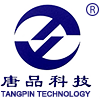Intelligent computing data centers usually refer to data centers optimized using intelligent computing technology or artificial intelligence technology. These types of data centers typically apply machine learning, big data analysis, and automation technologies to improve data processing efficiency, reduce energy consumption, and optimize data storage and management processes. Intelligent computing data centers may have utilized advanced technologies in server management, network optimization, fault prediction, energy management, and other areas. A key feature of such data centers is their ability to better adapt to the ever-changing computing needs and environmental conditions through intelligent means.
Tangpin is committed to building and producing high standard, high-performance, and high transmission intelligent computing data centers and their supporting equipment. Service customers cover key large enterprises/universities/research institutes/Internet and other fields.
Project Cases
Since 2018, we have provided product supply for China Telecom Cloud Computing Company's resource pool project and have supplied products to resource pools in more than 20 provinces and cities across the country.
Since 2020, we have provided product supply for China Mobile's resource pool project and have supplied products to China Mobile's resource pools at several major nodes nationwide.
Product workshop


Main product introduction
1. network patch cords


The Category 5e network patch cords are usually composed of four pairs of twisted pair cables, each pair of which is carefully twisted (shielded if necessary) to reduce the impact of crosstalk and external interference on signal quality. The two ends of the patch cord are usually equipped with RJ45 crystal heads, which are used to connect to network devices such as computers, switches, routers, etc.
The Category 6 network patch cords support higher transmission rates, typically up to 10 Gbps (ten gigabits per second), which gives them an advantage over Cat5e network patch cords in terms of data transmission speed. In addition, the Cat6 network patch cords also have lower latency and more stable signal transmission, making them suitable for network environments that require high data transmission rates and quality.
There are CAT6/CAT5e/CAT6a, corresponding to unshielded, single shielded, and double shielded options.
2. Network Cable Manager


(1) The network cable manager is a tool used to organize network jumpers. The network cable manager can be installed at the front end of the rack, providing horizontal cable management for wiring or equipment jumpers, simplifying the planning and installation of cross connection systems.
(2) Made of high-quality ABS plastic, it can avoid scratches and has a detachable surface panel design
(3) Realize a clean and aesthetically pleasing wiring system through simple, flexible, effective, convenient, and safe functions.
(4) Unique exterior design, simple, compact, and aesthetically pleasing. The black appearance allows it to be used in conjunction with any other device in the data center
3. Fiber optic patch cord


(1) Suitable for interconnection of equipment within short distance buildings
(2) Multiple connector options available: SC/FC/ST/LC/MT/MU
(3) Multimode OM3/OM4, single mode OS2 can be selected
(4) The main diameter of the outer sheath is 3mm, 2mm, or 0.9mm
(5) Low insertion loss and high return loss
(6) Insert end face: UPC/PC/APC
(7) Durability: 1000 times
(8) Sheath material: PVC/LSZH......
(9) Cable materials comply with OFNR and OFNP
(10) Rosh6
(11) Working temperature: -40 ℃ to+85 ℃
4. MPO patch cord


(1) There are various lengths to choose from, including single mode/multimode, 8 cores/12 cores/16 cores. OM3/OM4 is available for multimode, and UPC/APC connectors are available for customized MPO-LC patch cords.
(2) High strength cable branch design with good mechanical properties
(3) 100% factory pre termination and testing to ensure transmission performance
(4) Support 10G/40G/100G network applications
(5) The outer sheath materials include PVC/LSZH, and other materials to choose from
(6) OFNR/OFNP flame retardant grades are optional.
5. ODF

(1) 19-inch standard installation interface, surface electrostatic spray coating, beautiful and elegant
(2) Adopting a stacked 12 core integrated melt fiber tray, convenient to use
(3) Card mounted FC, SC, LC, ST, etc., arranged at 30 degrees, ensuring that the fiber bending radius is greater than 40mm, while also avoiding laser burns and eye damage during fiber scheduling
(4) Suitable for terminating optical cables of various structures
(5) Clear and complete fiber optic routing identification
(6) Meet the fiber optic communication system, fiber optic data transmission, local area network (LAN), fiber optic sensors, FTTX and other fiber optic fusion storage and wiring functions.
6. MPO distribution frame


(1) The MPO module box can be equipped with 8 duplex LC adapters, and the rear panel can be equipped with 2 MPO interfaces
(2) The MPO module box can accommodate one 16 core MPO to LC jumper or two 8-core MPO to LC jumpers.
(3) The module box can be installed or removed from the front of the distribution frame.
(4) MPO distribution frames can be equipped with high core requirements such as 48 and 96, suitable for dense distribution environments
(5) 100% pre terminated to ensure low insertion loss for high-speed network requirements
7. Optical Transceiver


The main function of the optical module is to convert electrical signals into optical signals at the transmitting end and transmit them through optical fibers; At the receiving end, it converts the optical signal back into an electrical signal. This conversion process allows data to be transmitted over long distances and at high rates, while reducing signal attenuation and electromagnetic interference.



























